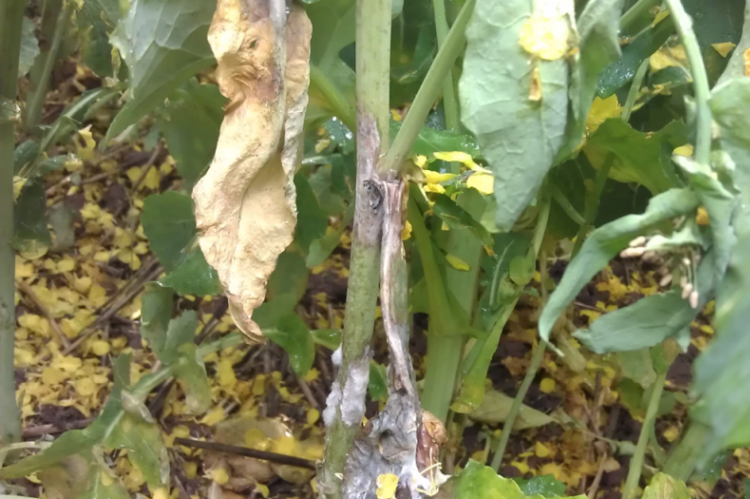Sclerotinia stemrot
Sclerotinia can attack a wide range of crops, including oilseed rape, potatoes, peas, beans, carrots and lettuce. Crops which are unaffected include grasses and cereals.
The disease can be identified from approximately May onwards when the stems become bleached. A hard block of sclerotia forms within the cavity of affected stems leaving the plants more prone to lodging. These are white bodies which later turn black.
The disease favours wet conditions and can be spread via airborne spores from May. The spores can survive within the soil for up to eight years. Lengthening the rotation can help towards controlling the problem, as can ploughing following OSR - this buries the spores to a depth greater than that where they can germinate.

Sign up to the FAS newsletter
Receive updates on news, events and publications from Scotland’s Farm Advisory Service
